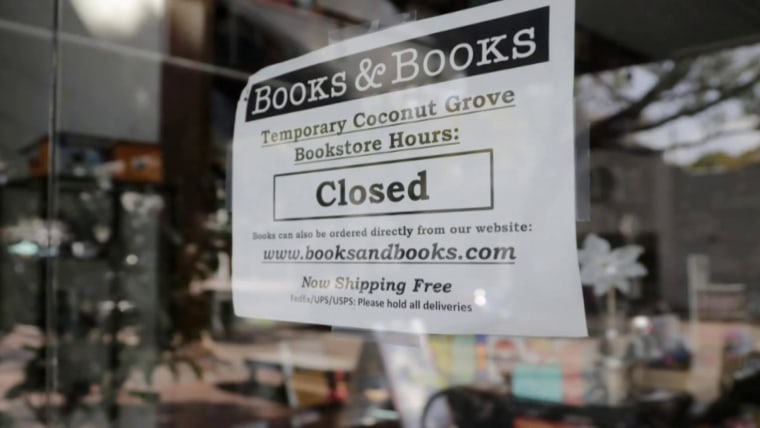Why Main Street is suffering while Wall Street is soaring
Although nearly 40 million Americans have lost their jobs and small businesses are struggling to stay solvent, you might not realize that if you only watched the stock market.
The Dow Jones Industrial Average, Nasdaq and S&P 500 have all bounced back from their lows, with the Dow breaching the 25,000 mark on Wednesday for the first time since March. Even as the coronavirus pandemic ravages the Main Street economy, Wall Street hasn’t come close to the 50-plus percent drop it suffered during the Great Recession.
It’s puzzling, but economic experts say there are technical and policy reasons why stock prices today don’t reflect the “real” economy.
References to “the stock market,” although common, are a little misleading in that the market is not a singular entity. Traders and investors follow the movements of the three major indices — which comprise only a small fraction of the number of public companies operating in the United States.
In terms of value, though, the companies comprising the indices are heavyweights: Apple, Alphabet, Amazon and Microsoft, for instance, all have market caps topping $1 trillion each.
Aside from their size, the types of companies that dominate the S&P, Dow and especially the Nasdaq are contributing to their current buoyancy. The recent market surge has largely been propelled by rising shares at a handful of gigantic companies, from tech giants to Walmart and Johnson & Johnson — all companies whose products and services have been highly in demand as Americans stocked up on essentials, battened down the hatches and stayed home.
Let our news meet your inbox. The news and stories that matters, delivered weekday mornings.
Tech firms, in particular, are in a good place to take advantage of the shift as Americans conduct much more of their personal and professional lives online. “These indices are very tech-heavy and the tech sector is navigating this environment better than others,” said Mark Zandi, chief economist at Moody’s Analytics. “In some ways, they’re beneficiaries,” he said.
“Those are the companies that are directly benefiting from the stay-at-home digitization of our economy,” said Carlton Neel, CEO of Chaikin Analytics. “In the last two months, we’ve accelerated what might have taken two years for Microsoft, Amazon, Apple and Google to accomplish.”
“In the last two months, we’ve accelerated what might have taken two years for Microsoft, Amazon, Apple and Google to accomplish.”
It can be hard to grasp just how big some of these tech giants are. We might assume that many of the brand names we see on a regular basis are the biggest companies out there, but name recognition has nothing to do with market capitalization.
“If you go to McDonald’s, you think of McDonald’s as ubiquitous, but it’s a fraction of the size of these big tech behemoths,” Neel said. McDonald’s market cap is roughly $137 billion — or only about one-tenth the size of Apple’s roughly $1.4 trillion market cap.
Airlines are another great example. “They’re massive in terms of employment, but they’re not in terms of market capitalization, so they have a relatively modest impact on the direction of the stock market,” Neel said.
These huge market caps confer an outsized influence. “When trillion-dollar companies go up 5 percent, they’re literally going up $50 billion, which is bigger than a lot of companies are,” Neel said. “When you have moves and growth in really large companies, that winds up being much more important to the direction of the stock market.”
“Those top five stocks count for 20, 25 percent of market cap, so if they’re OK, the stock market is OK,” Zandi said. “They don’t really reflect the pain and suffering that’s going on in leisure, hospitality, brick and mortar retail, travel, transportation and distribution.”
The market is also getting a boost from the unprecedented actions taken by the Federal Reserve. “The Fed has taken away the tail risk. They’ve said we’re going to do whatever it takes to make sure the financial system performs well and that the stock market doesn’t evaporate,” Zandi said.
“With the Fed lowering rates to zero, and just saying that they have the ability to make purchases of corporate debt in the future, has been enough to ensure that corporate debt spreads have come down,” said Constance Hunter, chief economist and principal at KPMG. When it costs companies less to borrow money, that impacts their ability to turn a profit in the future, which makes them more valuable in the eyes of investors.
The flip side of lower borrowing costs is lower returns for bond holders — leaving them with no place to go but stocks if they need to hit a certain rate of return. ”Bond investors are now becoming stock investors,” Neel said, which drives share prices higher.
The growth and popularity of passive investment vehicles that track the performance of a particular index is one final factor giving the stock market’s most recognizable names a tailwind.
“There’s an increasing amount of concentration in a decreasing number of stocks,” said David Trainer, CEO of investment research firm New Constructs. “The passive strategy, the index and ETF strategy, has become a crowded trade,” he said.
“That gives it its own kind of forward momentum — an underlying positive bias, which matters over time,” Zandi said.

